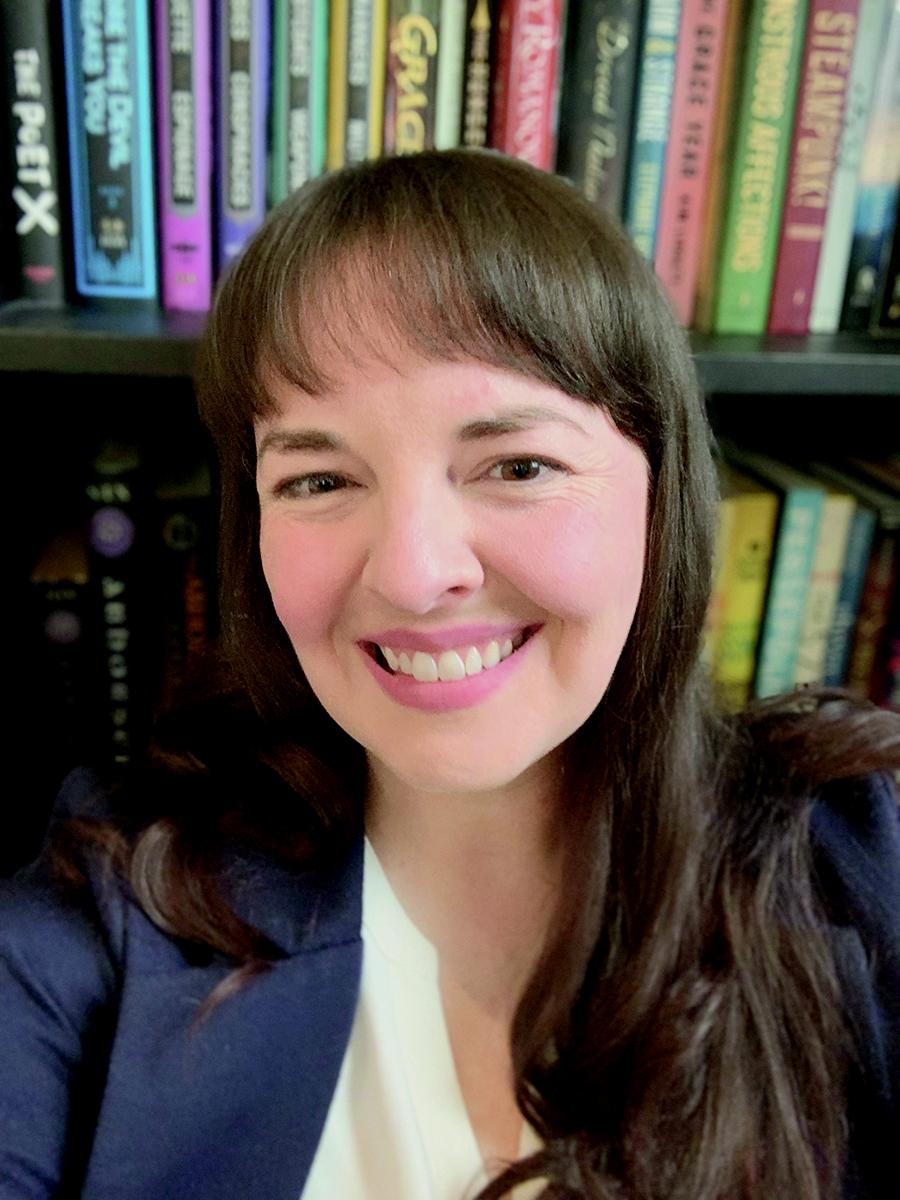Five questions for Malinda Lo
In Malinda Lo's new YA thriller A Line in the Dark (Dutton, 14 years and up), four teenage girls — narrator Jess, her best friend and longtime secret crush Angie, Angie's brand-new girlfriend Margot, and Margot's bestie Ryan — must carefully navigate volatile dynamics of friendship and romance.
 Photo: Patty Nason.
Photo: Patty Nason.In Malinda Lo's new YA thriller A Line in the Dark (Dutton, 14 years and up), four teenage girls — narrator Jess, her best friend and longtime secret crush Angie, Angie's brand-new girlfriend Margot, and Margot's bestie Ryan — must carefully navigate volatile dynamics of friendship and romance. And that's before somebody winds up dead.
1. You've said the idea for this book came partly from a conversation with editor Andrew Karre about Tana French's adult crime novel The Secret Place. It's a favorite of mine too! What is it about twisty murder mysteries that captures readers' attention?
ML: Traditional murder mysteries are interesting because they're ostensibly about a horrible thing — murder — but underneath that, they're about restoring order to a messed-up world. By the end of a whodunit, the detective has taken the reader through all the reasons why this terrible thing happened. Through that explanation, and by seeing the killer captured, the reader feels a sense of catharsis.
Crime writers like Tana French or psychological thriller writers like Gillian Flynn take a slightly different perspective. I think French's procedurals do some of that restoring of order, but her criminals are often ordinary people, and through the investigation we begin to identify somewhat with them. Plus, her detectives are quite flawed, and we come to see that justice isn't simple. Flynn, through novels like Gone Girl, flips order on its head. You go in for a roller-coaster ride through the darkness of the world. I always leave her books feeling very unsettled.
I guess what I like about a twisty mystery is the state of not knowing, coupled with the confidence that by the time I get to the end, I will know.
2. About two-thirds of the way through A Line in the Dark, the point of view switches rather dramatically — which allows you to conceal and reveal important information for readers. When did this structure come into your thinking about the novel?
ML: Not until the second draft. The first draft was entirely from Jess's perspective, but I was unsatisfied with it. It felt ordinary, and it needed something to bring it into sharper focus. It was Andrew [Karre] who suggested changing the second half into a more distant third-person narration, and the moment he suggested it, I knew instinctively it was the right choice. It immediately problematizes Jess as the narrator. When the switch occurs, the reader should begin to question Jess's reliability. The reader should also feel momentarily disoriented, because something major has happened.
However, I've been surprised that some readers found the switch so dramatic. Perhaps it shows that Jess is an engaging character, and you want more of her. But this book isn't about making the reader comfortable.
 3. Why did you cast Jess — of your four main characters — as narrator?
3. Why did you cast Jess — of your four main characters — as narrator?ML: It was always Jess's story. I wanted to write about a queer Chinese American girl who was in unrequited love with her best friend, and that's Jess. Although I do have a soft spot for Margot.
4. Jess is a talented comics artist, and the project she's working on throughout A Line in the Dark in some ways parallels the novel's events. Are events in your own life reflected in your writing in a similar way?
ML: Of course! I find it interesting that authors of fantasy and science fiction novels are rarely asked if their books are based on their personal experiences, because all writing is based on personal experience. I may not have gone on an epic quest through a haunted forest, but the feelings in my books are often based on feelings I've had. Real-life events, in fantasy and science fiction, can take on metaphorical significance that they can't in a so-called realistic novel.
That said, I also find it interesting that people often seem to believe that authors of realistic fiction are directly translating their personal experiences into their work. The fact is that telling a story is a transformative experience. There is rarely a one-to-one translation onto the page unless you're writing memoir, and even then, memory is unreliable. I think that the best books feel emotionally true, and that truth has to be rooted in real-world experience.
5. Has tracking stats on LGBTQ main characters informed your writing and/or vice versa? What changes have you seen over time?
ML: Learning about the kinds of LGBTQ characters and story lines that are predominant in YA fiction has mostly shown me what I don't want to do. For example, popular depictions of lesbians often end up with them dead; this is the "bury your gays" trope. When I wrote A Line in the Dark, which involves murder, I purposely chose to write against this trope.
There have been so many changes in LGBTQ YA over time — too many to explain here. But all of the information is on my website, www.malindalo.com.
From the November 2017 issue of Notes from the Horn Book.

RELATED
RECOMMENDED
ALREADY A SUBSCRIBER? LOG IN
We are currently offering this content for free. Sign up now to activate your personal profile, where you can save articles for future viewing.







Add Comment :-
Be the first reader to comment.
Comment Policy:
Comment should not be empty !!!